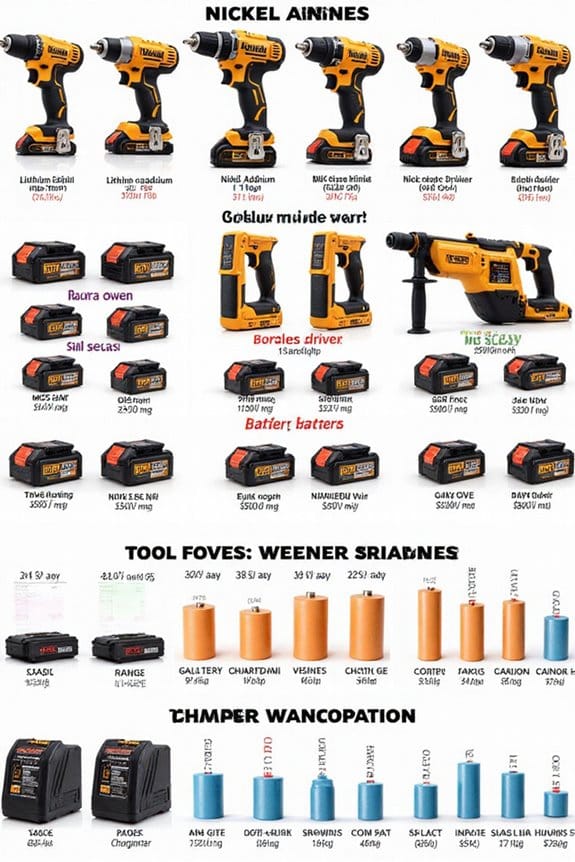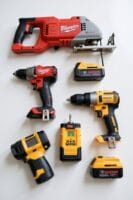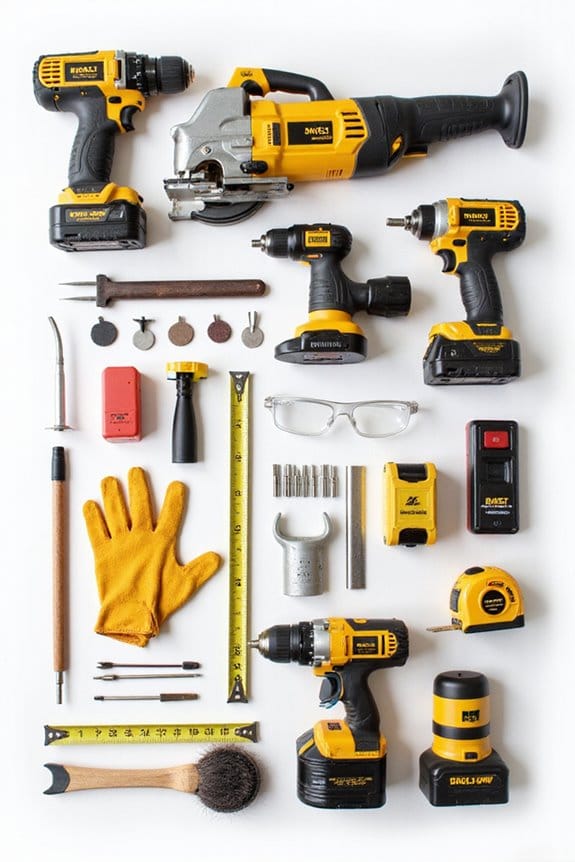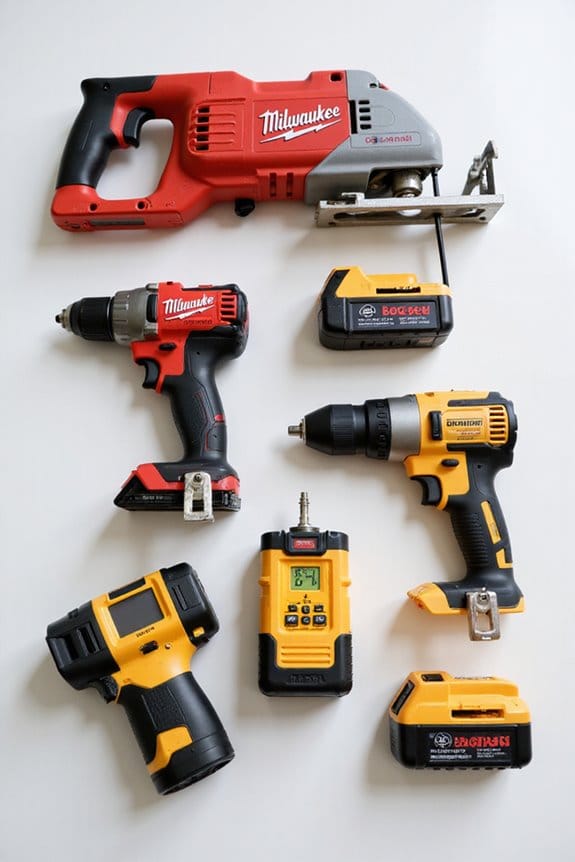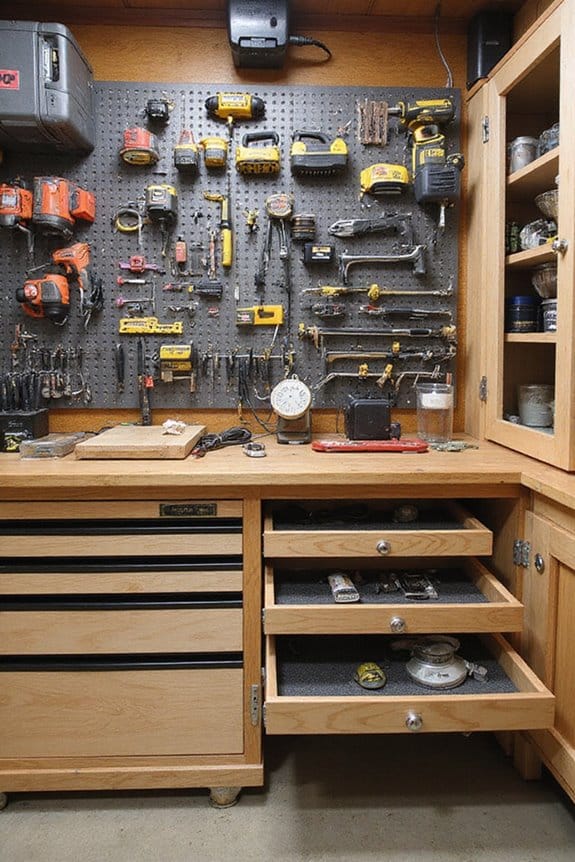The lifespan of power tool batteries varies. Here’s a quick breakdown for you: 1) Nickel-Cadmium (NiCd) lasts around 1-2 years, 2) Nickel-Metal Hydride (NiMH) can go 2-4 years, while 3) Lithium-Ion (Li-ion) may last 3-5 years, and 4) Lithium Iron Phosphate (LiFePO4) can stretch from 5-10 years! Just remember, proper care is key. Stick around, and I’ll share some handy tips for keeping those batteries going strong!
Key Takeaways
- Nickel-Cadmium (NiCd) batteries typically last 1-2 years, while Nickel-Metal Hydride (NiMH) batteries last 2-4 years.
- Lithium-Ion (Li-ion) batteries have a lifespan of 3-5 years and can last up to 20 years in optimal conditions.
- Lithium Iron Phosphate (LiFePO4) batteries are known for their longevity, lasting between 5-10 years.
- Battery longevity is influenced by usage patterns, charge cycles, and environmental conditions, such as temperature and discharge depth.
- Proper storage and maintenance, including keeping batteries at 40-60% charge, can significantly enhance their lifespan.
Understanding Battery Types and Their Lifespans

When it comes to power tool batteries, understanding the different types and their lifespans can really save you some headaches down the road. Here’s a quick breakdown of battery chemistry and lifespan:
- Nickel-Cadmium (NiCd): Lasts about 1–2 years, with a cycle life of 500-1,000. Watch out for the memory effect!
- Nickel-Metal Hydride (NiMH): Typically good for 2–4 years. More eco-friendly but doesn’t love heat.
- Lithium-Ion (Li-ion): Commonly lasts 3–5 years, with the potential to reach 20 years. High energy density means longer runtimes!
- Lithium Iron Phosphate (LiFePO4): Impressively lasts 5–10 years and offers increased safety.
Choosing wisely impacts not just your tools but also the environment. It’s all about knowing what fits your needs!
Charge Cycles and Battery Degradation
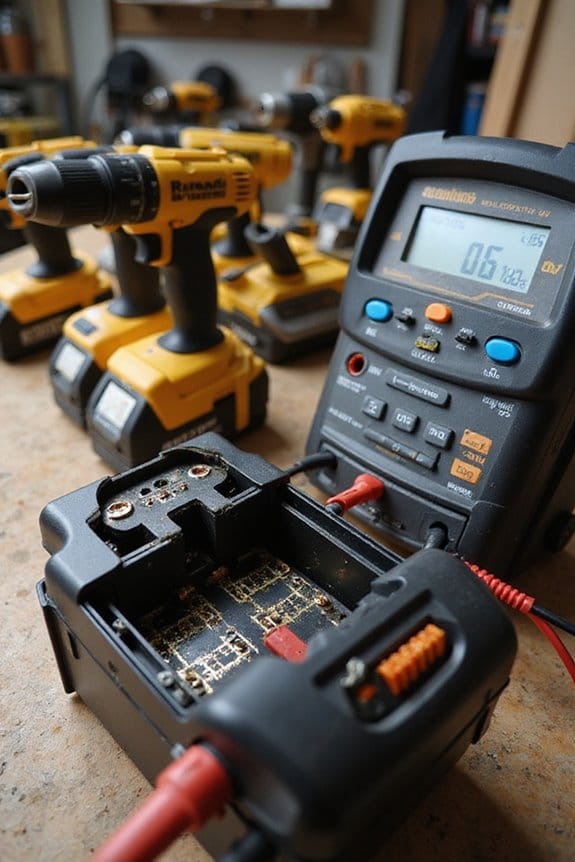
Understanding charge cycles and battery degradation is essential if you want your power tools to last. The charge cycle impact on battery lifespan is significant; most lithium-ion batteries endure about 300 to 500 cycles before you notice performance declines. Here are a few degradation factors to keep in mind:
- Full Discharges: Avoid completely draining your battery. This speeds up capacity loss.
- Temperature: High heat can break down battery chemistry faster than you can say “overheating.”
- Storage: Storing batteries fully charged or empty is a no-go. Aim for around 40-60% charge.
How Usage Patterns Affect Battery Life
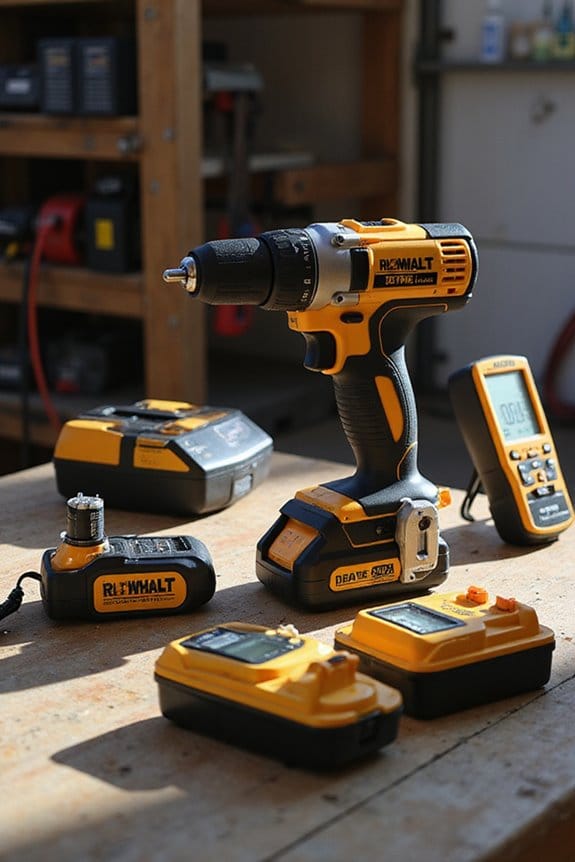
How you use your power tools can make a big difference in how long the batteries last. Here are some key factors to take into account:
- Usage Intensity: Heavy use generates more heat, accelerating battery wear. Opt for moderate tasks when you can.
- Discharge Depth: Avoid deep discharges. Keeping your battery above 20% can extend its life considerably.
- Environmental Conditions: Using tools in extreme temperatures can stress batteries. A cooler, shaded area is your friend.
- Tool Types: High-power tools wear out batteries faster than lighter models. Choose wisely based on your needs.
- Charging Speed: Fast charging might be tempting, but it can increase heat. Slow and steady often wins the race for battery longevity.
Best Practices for Charging Power Tool Batteries

To keep your power tool batteries in top shape, it’s essential to follow some best practices for charging. Here are my top recommendations:
- Use the Correct Charger: Always stick with the manufacturer’s charger. Using incompatible chargers can hurt your battery’s lifespan—trust me, you don’t want that.
- Charge Batteries Fully: A full charge before use helps avoid memory issues. Aim for a solid overnight charge.
- Disconnect After Charging: Once charged, unplug that battery! Leaving it connected can stress the battery.
- Avoid Overcharging: Overcharging can degrade battery chemistry. Charge at room temperature and respect the recommended timeframes.
- Mind Battery Compatibility: Different battery types need specific charging techniques, so double-check before plugging in!
Following these tips can help you maximize battery life and efficiency.
Storage and Maintenance Tips for Longevity
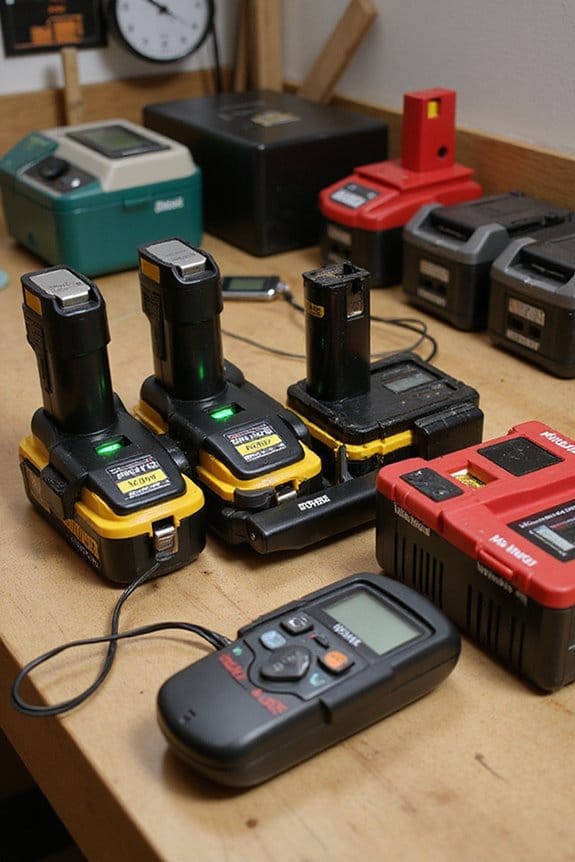
While you might think that simply charging your power tool batteries is enough, proper storage and maintenance play a huge role in maximizing their lifespan. Here are some tips I swear by:
- Battery Storage: Keep them in a cool, dry place—ideally between -10°C and 50°C. Avoid direct sunlight and moisture!
- Charge Level Management: Store lithium-ion batteries at 40-60% charge. It’s like a nap for your battery—just enough to keep it healthy.
- Cleaning: Wipe down contacts with a damp cloth. Trust me, dirt can be a battery’s worst enemy.
- Handling: Remove batteries from tools during long breaks. It helps prevent accidental discharge.
Real-World Battery Lifespan Insights
After taking care of your power tool batteries with proper storage and maintenance, it’s time to look at how long you can expect them to last in real-world situations.
- Lithium-ion Batteries: Expect about 2 to 3 years of use, possibly up to 5 with good handling.
- Nickel-Cadmium (NiCd): Lasts around 2 to 3 years, but usage patterns matter.
- Nickel-Metal Hydride (NiMH): Generally lasts between 2 to 4 years.
Your usage environment plays a big role, too. Frequent use can wear them out quicker, while moderate use helps extend life. Just remember, keeping them cool and charged properly boosts longevity. So, treat your batteries well, and they’ll repay you with reliable performance!
Frequently Asked Questions
Can I Use Different Brands of Batteries in My Power Tools?
I often wonder about battery compatibility between brands. Unfortunately, brand differences usually prevent cross-usage. While adapters exist, I’ve found they require careful matching to guarantee safety and performance. Always double-check before mixing batteries!
What Signs Indicate My Battery Needs to Be Replaced?
I’ve noticed my battery life decreasing, with performance issues like inconsistent power and longer charging times. If you see swelling or overheating, it’s definitely time to contemplate replacing your battery for safety and efficiency.
How Can I Recycle Old Power Tool Batteries?
When I recycle old power tool batteries, I always look for eco-friendly options. I take them to designated recycling centers or stores like Lowe’s, ensuring proper battery disposal to protect our environment and reduce fire risks.
Are There Warranties for Power Tool Batteries?
Imagine a knight guarding a treasure; that’s your power tool battery warranty. It shields your investment. With brands like DEWALT and Milwaukee, you’re covered for years. Knowing the warranty’s terms can save you a lot!
Can Extreme Temperatures Affect Battery Performance?
I’ve noticed that extreme temperatures greatly affect battery lifespan. Heat accelerates degradation, while cold reduces capacity. It’s essential to manage temperature effects to guarantee peak performance and longevity of my batteries.

